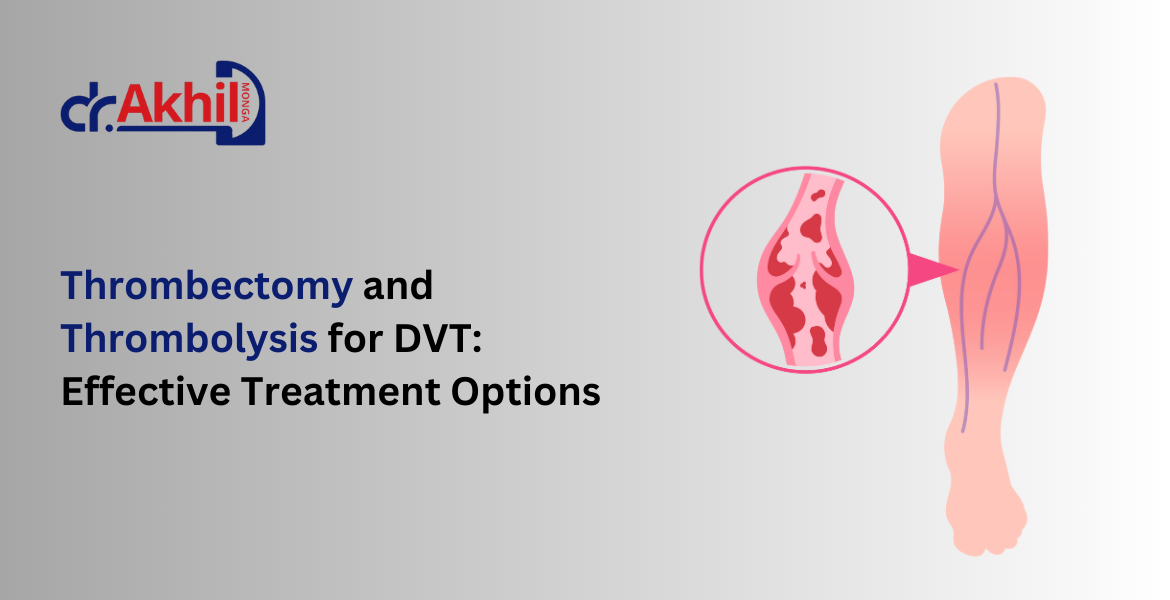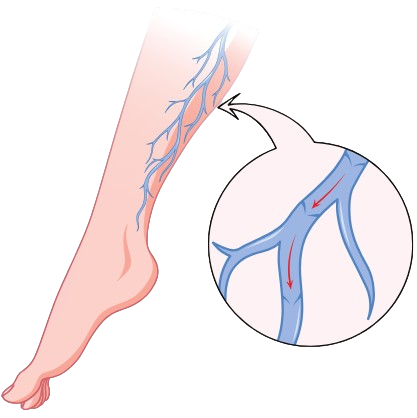
Imagine waking up one morning with persistent pain and swelling in your leg that intensifies as the day progresses. What if this is more than just a simple cramp? Such a scenario might be indicative of Deep Vein Thrombosis (DVT), a disease that can be life-threatening if left untreated. A study highlights the significant prevalence of DVT in India, with an incidence rate of 17.46 per 10,000 hospital admissions.
This alarming statistic underscores the importance of awareness and timely treatment. This blog provides a comprehensive overview of DVT and two primary treatment approaches: thrombectomy and thrombolysis. It discusses their procedures, benefits, and suitability for different patients.
Deep Vein Thrombosis (DVT) emerges when a blood clot forms in one or multiple deep veins in your body, primarily in the legs. These clots can partly or completely block blood flow through the vein, leading to severe complications if not treated promptly.

DVT typically arises from a combination of factors, such as
Symptoms of DVT often include:
Recognising these symptoms early is crucial to preventing more severe complications.
The sooner DVT is diagnosed and treated, the lower the chances of complications. Early intervention is key to mitigating these risks. Failing to treat DVT promptly can lead to several severe complications.
Thrombectomy is a minimally invasive procedure designed to remove blood clots from the blood vessels. It is typically performed in cases where the clot is large and causing significant obstruction or when the patient does not respond well to medication. This method involves inserting a catheter into the impacted vein, often through a small incision in the groin. The catheter is guided to the clot, where it either mechanically breaks up the clot or uses suction to remove it.
Thrombolysis involves using drugs, known as thrombolytic agents, to dissolve blood clots. It is a less invasive option compared to thrombectomy and is often used for smaller clots. Thrombolysis can be administered in two ways:
Pharmacomechanical thrombectomy is a minimally invasive procedure combining thrombectomy and thrombolysis to treat Deep Vein Thrombosis (DVT) without surgery. A catheter is inserted into the vein to mechanically break up the clot while delivering thrombolytic drugs directly to dissolve it. This method is effective for large clots, providing immediate relief with minimal surgical risks like infection or bleeding.
For patients with May-Thurner Syndrome, where the left iliac vein is compressed, stenting may be required to keep the vein open after clot removal, preventing the recurrence of DVT and improving blood flow. This combination of pharmacomechanical thrombectomy with stenting can be highly effective in maintaining long-term vein health.
This integrated approach ensures immediate clot resolution and long-term management of venous flow.
Healthcare providers choose between these options based on several aspects, including the size and location of the clot, the patient’s overall health, and the urgency of the situation.
Post-treatment care is crucial to ensure recovery and prevent recurrence. This typically includes:
The duration of post-treatment care can vary, but most patients will need to continue care for several months to a year, depending on their risk factors and response to treatment.
To reduce the risk of DVT, consider the following:
Deep Vein Thrombosis is a severe illness that requires prompt attention. Understanding the risks, recognising the symptoms, and seeking timely treatment can significantly improve outcomes. All the above procedures are effective treatment options, each with its benefits. By following preventive measures and post-treatment care, the risk of recurrence can be minimised.
If you suspect you may have DVT or are concerned about your risk, don’t wait. Consult with Dr Akhil Monga, a leading expert in DVT treatment, for a comprehensive evaluation. He will provide personalised guidance, diagnose your condition accurately, and recommend the best course of action, including thrombectomy or thrombolysis. With his extensive experience and expertise, he can offer you the highest grade of care and support. Book a consultation with him; he will help you achieve optimal health and well-being.